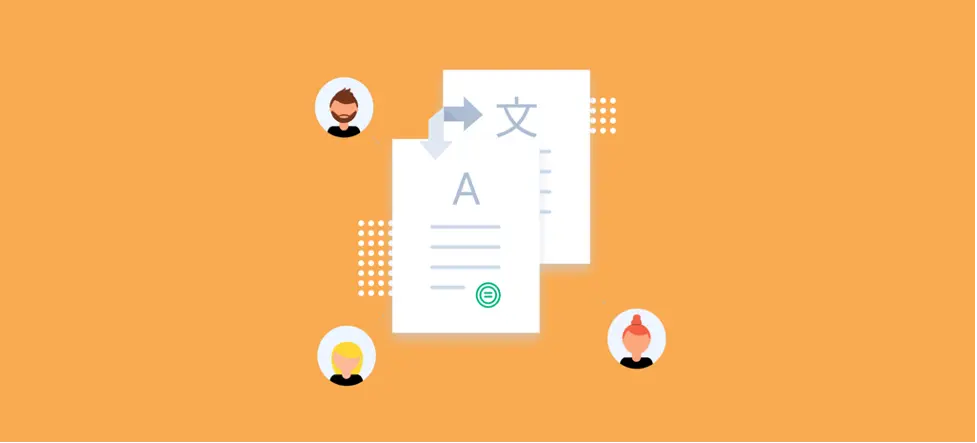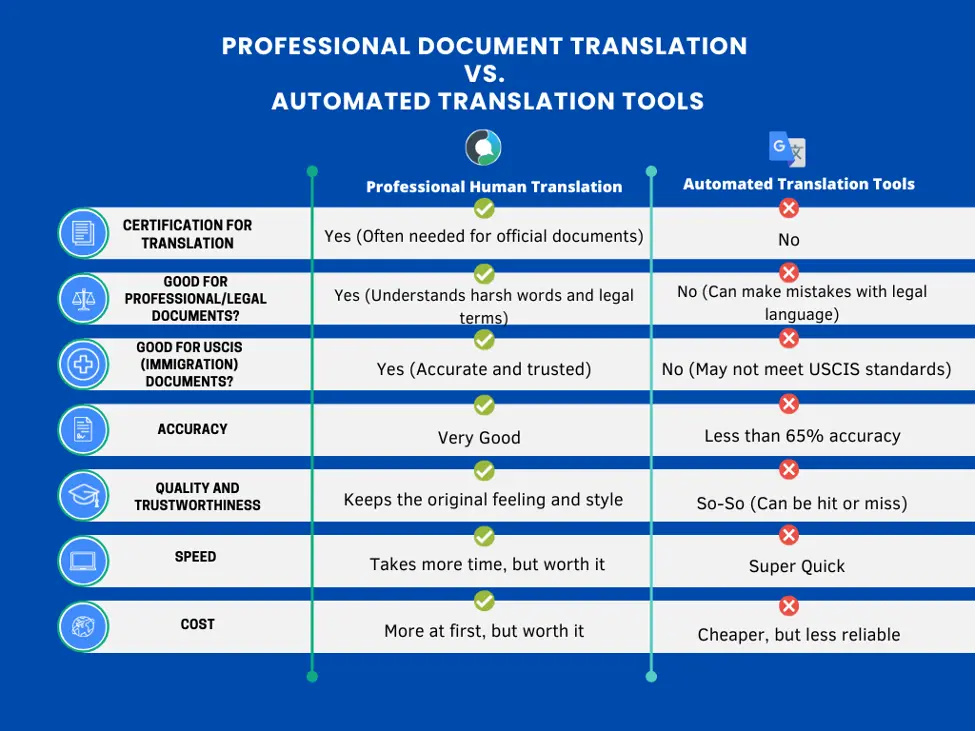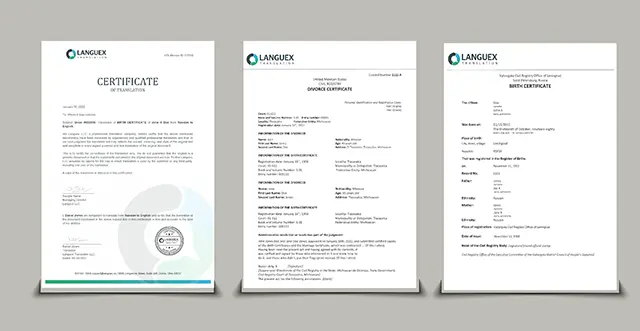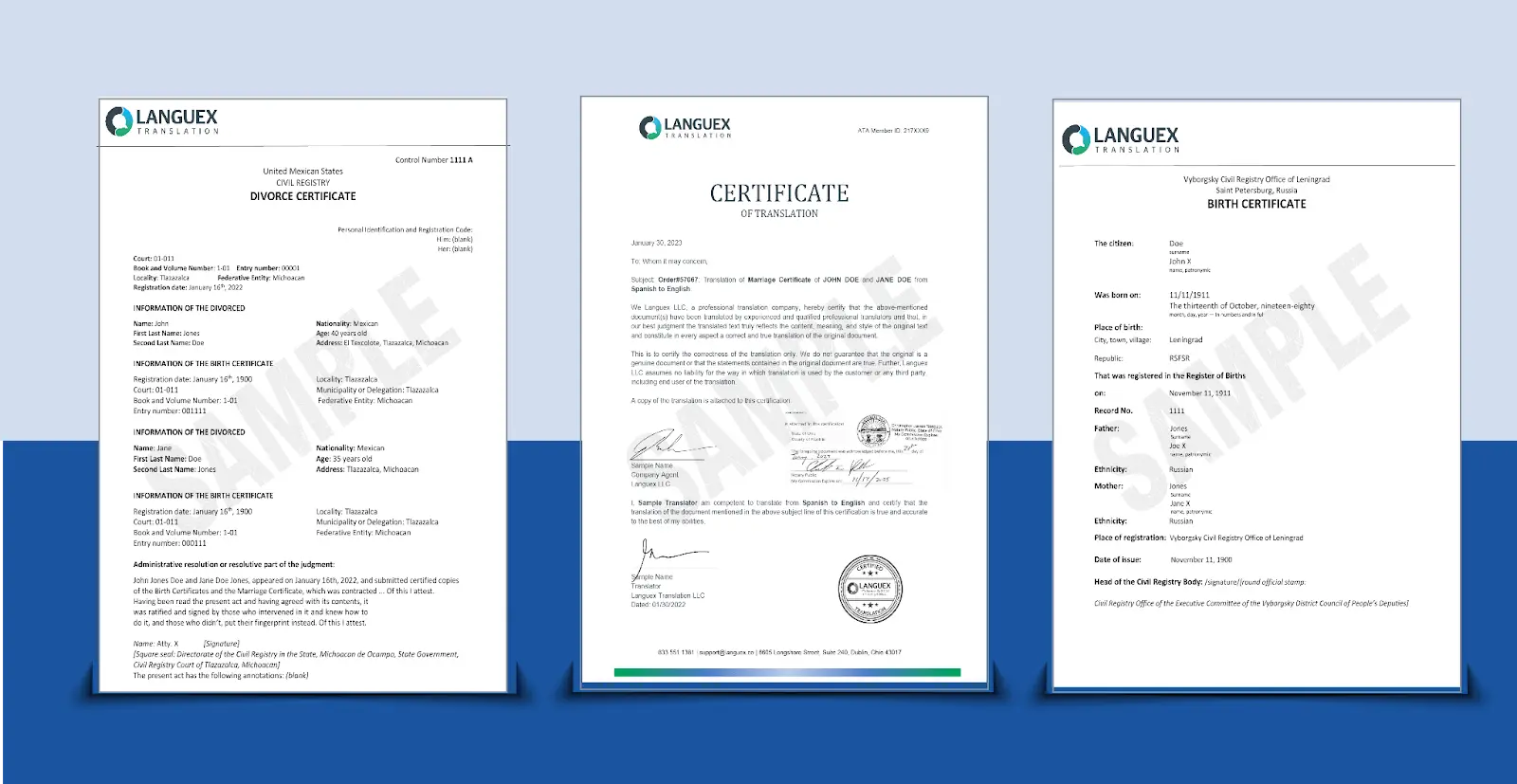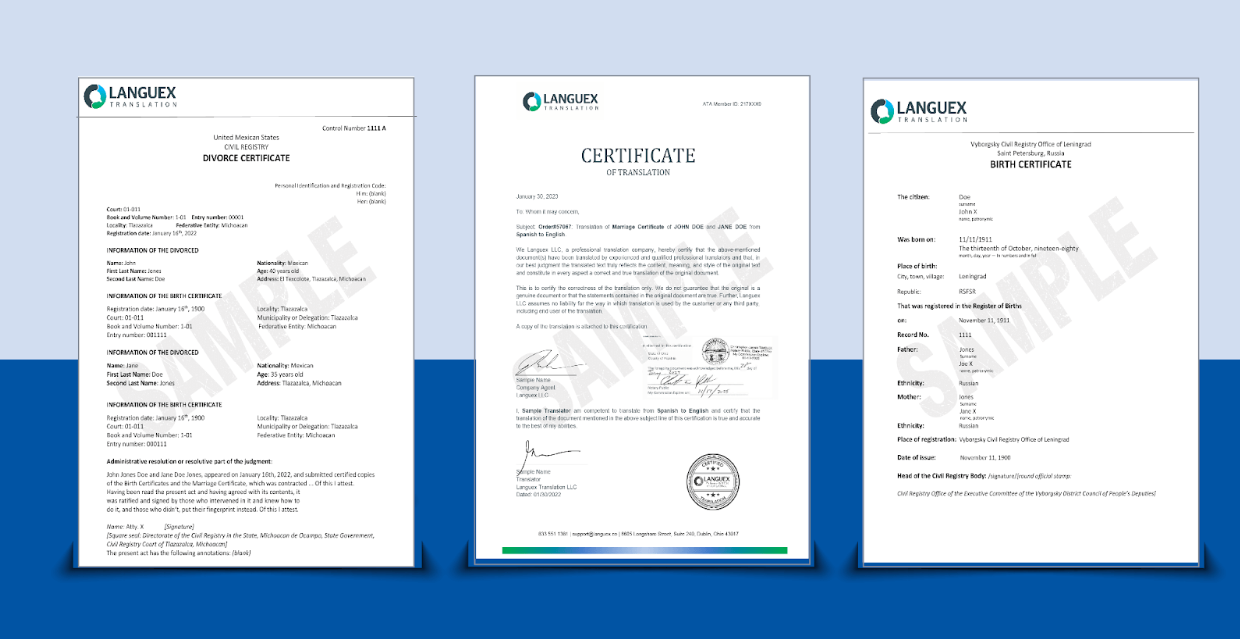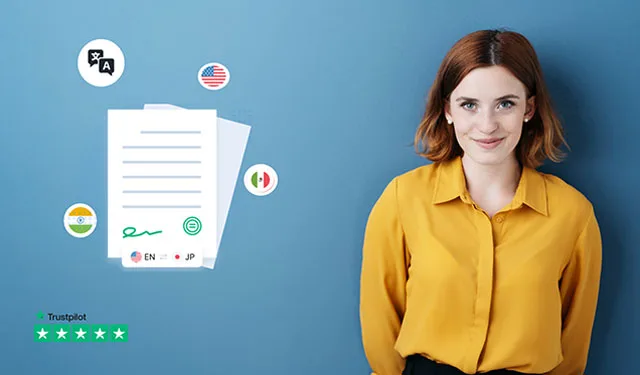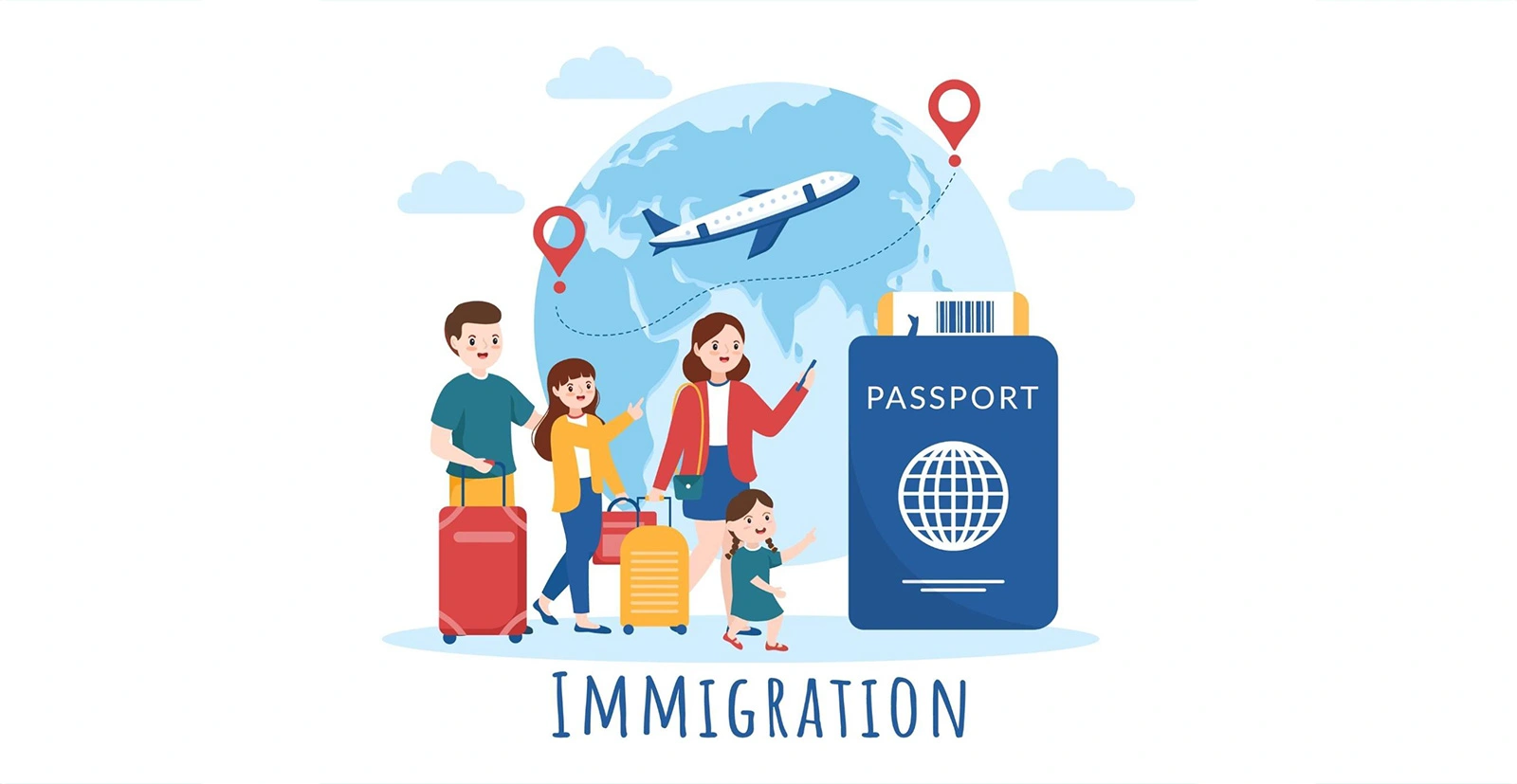Learn about document translation and discover the differences between certified and notarized document translations. These are important for legal and official uses. Get helpful tips on picking the right document translation company for your needs.
The need for accurate and meaningful document translation keeps growing as our world is more connected. Translations might be for legal, medical, business, or personal uses. This guide looks at document translation, the different types, and the differences between certified and notarized document translations. We’ll stress the need for specialized translation for different document types and advise on picking the best translation service you need.
Key Takeaways:
- Document translation converts texts from the source language to the target language.
- Certified translation legally validates documents for official use.
- Many documents like legal, medical, manuals, marketing, research, financials, etc. may need translation.
- Human, professional translators are better than machine translation tools
- When picking a document translation service, ensure expert translators, quality checks, pricing, and support
Table of Contents:
- What is Document Translation?
- Keys to Quality Translation
- What is a Certified Translation of a Document?
- Which Documents Need Translation?
- Steps to Translating Large Documents
- Professional Document Translation vs. Automated Translation Tools
- Who Can Translate Legal Documents?
- How Long Does It Take to Translate a Document?
- Online Tools for Document Translation
- Choosing the Right Document Translation Service
- Get Certified Document Translation You Can Trust
What is Document Translation?
Document translation converts texts like instruction manuals, reports, legal contracts, medical documents, and more from one language into another. The goal is to make a document readable and valuable in the target language.
People, businesses, and governments translate documents for various purposes, such as legal, immigration, business, and international communication.
Keys to Quality Translation
High-quality translation requires understanding who your audience is, what the purpose of the document is, the culture it’s coming from and going to, and the way its writing style comes across. You need more than just changing the words from one language to another.
The best results happen when professional, expert translators do the work. These specialists know the terminology and can capture the right tone so it sounds natural when translated. They focus on technical precision as well as cultural meaning.
The translation process can use technology tools to be more efficient and steady in quality. But at its core, you need human judgment and problem-solving to get an authentic translation.
What is a Certified Translation of a Document?
Certified document translation is the translation of essential documents when they need to be legally certified for official use.
This type of translation correctly gets the language nuances, formatting, terminology, and technical aspects to make it legally valid. Certified translators adhere to strict standards set by legal, government, or institutional policies to uphold the validity of the documents.
The most important part is the translator’s signed affidavit affirming the translation against omissions, edits, or factual distortions. This certificate will:
- Identify the qualified translator
- Verify linguistic expertise for the languages used
- Describe translated documents fully
- Translate the information within the documents with accuracy. Fill any language gaps that might be present between the languages.
Ultimately, this transparency and validation is what translates official certification. It offers the legal assurances needed when translating information related to foreign documents. The certification provides authenticity and equivalency.
In situations where important documents must be delivered, only certified translation can precisely transmit every semantic or technical detail between languages. It gives the legitimacy required for foreign paperwork to serve as genuine representations in courts, governments, banks, or other vital institutions.
What is a Notarized Document Translation?
A notarized translation adds a seal of legitimacy and verification to certified translations for many vital documents.
Notarized translations are integral in validating translated documents across many important situations. They provide legal validity for official paperwork requiring air-tight precision. Courts, government agencies, academic institutions, and more recognize notarized translation as carrying certified accuracy.
The Notarized Translation Process
Key Purposes of Notarized Translations
- Provides legal validation of the translator’s signature on official documents
- Meets formal requirements for paperwork like legal and court documents
- Removes any doubts over the legitimacy or transparency of translated documents
Getting documents notarized after expert translation gives an extra layer of legitimacy for high-stakes situations where no margin of error is permissible.
Which Documents Need Translation?
Some common documents often need translation:
- Legal Document Translation: Contracts, litigation documents, patents, and other legal papers that contain crucial binding information and technical terminology.
- Medical Documents Translation: Consent forms, prescriptions, medical research, and health records require accurate translation to convey vital details.
- Technical Documents Translation: User manuals, instruction guides, training materials, and other technical documentation for products and services.
- Marketing Content Translation: Websites, brochures, ads, product descriptions, and other promotional content need translation for businesses expanding into new markets.
- Academic Documents Translation: Research papers, articles, theses, and scholarly publications are translated to share knowledge globally.
- Financial Documents Translation: Financial statements, banking documents, and financial instruments need precise translations of financial terms.
- Government Documents Translation: Immigration applications, public notices, and other government documents may necessitate translation for immigrants.
- Personal Documents Translation: Birth certificates, academic degrees, driving licenses, and other personal documents occasionally require translation for official purposes.
- Literary Works Translations: Books, poems, and other literary creations are translated for a wider readership across cultures.
Any important document with specific details and information needs professional translation if it’s meant to be used for legal purposes or audiences speaking different languages.
Steps to Translating Large Documents
When you have lengthy, multi-page documents or large technical manuals needing translation, carefully managing the process is crucial for accuracy. Follow these best practices:
- Prepare Your Documents
- Organize all your documents clearly and confirm the total page count.
- Define the target languages needed for translation.
- Provide context on the purpose and intended use of the translations.
- Choose a Specialized Provider:
- Select a professional translation company with expertise in your industry and subject matter.
- Languex has years of experience translating complex documents in 100+ language combinations.
- Use a Translation Management Portal:
- Choose a provider like Languex that offers an online customer portal to submit documents, track progress, provide feedback, and manage all your large translation projects.
- Ensure Quality Control
- Trusted translation teams edit and proofread translations to fix errors and inconsistencies.
- You can review draft translations and request revisions as needed.
- Languex has a 6-stage quality process focusing on precision for large docs.
With intelligent preparation, an expert translation provider, a streamlined portal to manage your projects, and stringent quality checking, you can seamlessly translate books, manuals, contracts, and more, no matter the size. Languex makes translating any large document easy, accurate, and efficient.
Can I Translate Documents Myself?
You can attempt to translate documents yourself, but it has some limitations:
- Quality & Consistency Issues: Not done by professionals often have inaccuracies, inconsistent terminology, and formatting errors, which can undermine legitimacy.
- Lack of Specialized Vocabulary: Translating technical terminology is difficult and time-consuming for non-experts.
- No Review Process: With editors and proofreaders, errors can be easily noticed.
- Legal Vulnerability: Self-translating important documents can raise concerns on their validity and carry risks.
For documents like immigration, legal, government, and professional documents requiring accurate translation, professional document translation services like Languex are strongly recommended. Our expert translators provide error-checked translations using industry-standard vocabulary while accurately maintaining document formatting and styling.
The benefits of using a professional translation service include:
- Fluent translators: Native linguists convey the exact meaning and sentiment.
- Subject expertise: Technical experience in your field ensures accuracy.
- Quality assurance: Rigorous editing and proofreading minimize errors.
- Speed: Professionals translate faster than you can self-translate.
- Maintained formatting: Experts seamlessly recreate the source formatting.
- Legal credibility: Official certified translations provide authenticity.
While self-translating simple documents can work for essential communications, legal, technical, or significant documents, an expert translation service is highly recommended to mitigate errors and risks.
Professional Document Translation vs. Automated Translation Tools
Professional human translations are much more accurate than automated translations. This is for a few reasons:
- Professional Translators understand cultural references that programs need to grasp.
- Professionals know industry terminology and translate it correctly and consistently. Programs often mistranslate these terms because they need the proper context.
- Professional Translators know grammar rules in the source and target languages to make translations accurate. Programs often make grammatical mistakes that need fixing.
- Professionals maintain the right tone and writing style for the document’s purpose. Machine translations can sound unnatural.
- Experts analyze sentences to make translations clear and easy to understand. Automated translations can be confusing because they must flow properly or convey the intended meaning.
- Human editors catch and fix errors in translations. Programs make unpredictable translation mistakes.
Who Can Translate Legal Documents?
Who can you trust for legal document translation when high-stakes documents demand flawless language conversions? Here are the options:
Professional Legal Translation Company
Look for accredited companies employing certified translators who are experts in legal terminology conventions across jurisdictions. Stringent training plus robust legal knowledge means precision is never compromised. Vet firms thoroughly.
Freelance Legal Translators
You can hire qualified independent translators, but check their subject matter credentials and read reviews first. Solo rates may beat firms. Communicate exact requirements.
How Long Does It Take to Translate a Document?
Turnaround time is critical whether you need a quick certificate translation or a lengthy technical manual. At Languex, documents often must be translated rapidly for business purposes or to meet strict deadlines.
We provide high-quality translations in over 100 language combinations and have different speed options depending on your needs:
- Standard Delivery: Within 2-4 business days. Best for less urgent translations.
- Rush Delivery: Within 1-2 business days. For documents on a tight timeframe.
- Express Delivery: Within 24 hours. For last-minute or emergency translations.
No document is too big or small. Our team will assess the length and complexity and provide an accurate delivery estimate.
What Factors Influence How Long Document Translation Takes?
- Length: The longer the document, the more time required.
- Complexity: Technical documents with complex sentences or subject-specific terminology take longer.
- Language: Translating into languages very different from the source language adds time.
- Formatting: Retaining formatting like tables, footnotes, and headings adds effort.
- Quality: Higher quality levels need multiple editing and review cycles, increasing timelines.
- Experience:Expert translators are faster, while new translators take more time.
So, document translation timelines vary from hours to weeks depending on the desired document attributes and quality level. Accurately estimating project timelines requires experience.
Online Tools for Document Translation
Here are some of the top online tools available for document translation:
- Google Translate: Supports over 100 languages with basic machine translation capabilities; not recommended for official document translation.
- Languex: Certified translation company providing accurate, human translations in over 100 languages, best fit for professional document translation
- DeepL: It uses artificial intelligence for more accurate translations than Google Translate and has free and paid plans.
- Translation Shop: Experienced certified translators guarantee exact translations of source documents.
- Microsoft Translator: Translates documents and websites into multiple languages and has API access.
The choice of tool would depend on the document’s complexity, target languages, quality needs, and available budget. Human-powered tools or hybrid human + machine models are recommended for professional translation.
Choosing the Right Document Translation Service
With countless translation options, selecting the exemplary service to certify and translate your vital documents can be overwhelming. Here are five key factors to help ensure you make the perfect match:
- Industry Expert Translators: Seek translators who combine linguistic excellence with specific expertise in your field – legal, technical, medical, etc. Niche expertise promotes precision.
- Rigorous Quality Control: Demands strict editing, proofing, and review processes. This quality control creates maximum accuracy.
- Range of Solutions: Check their core services like certified translation or interpreting, plus extras like localization, formatting conversions, and subtitling. One-stop shops simplify.
- Cutting Edge Technology: Ask about their use of tools like translation memory systems, terminology trackers, and machine translation to enhance consistency and efficiency. Leveraged technology optimizes output.
- Secure Handling of Documents: For privacy protection, confirm they offer tight data security, confidentiality, and non-disclosure protections when you submit sensitive materials. Trust is a must.
Get Certified Document Translation You Can Trust
Let Languex take on your document translation needs with customized attention from their highly responsive team. Get a free quote from Languex today and get started on solving your translation needs.
